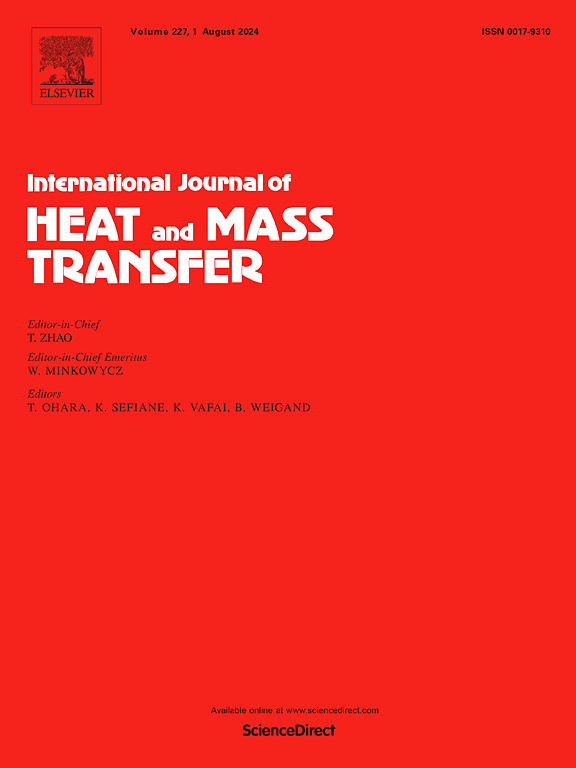Three-dimensional (3D) tensor-based methodology for characterizing 3D anisotropic thermal conductivity tensor
IF 5.8
2区 工程技术
Q1 ENGINEERING, MECHANICAL
International Journal of Heat and Mass Transfer
Pub Date : 2025-03-01
DOI:10.1016/j.ijheatmasstransfer.2025.126886
引用次数: 0
Abstract
The increasing complexity of advanced materials with anisotropic thermal properties necessitates more generic and efficient methods to determine three-dimensional (3D) anisotropic thermal conductivity tensors with up to six independent components. Current methods rely on a vector-based framework that can handle only up to four independent components, often leading to inefficiencies and inaccuracies. We introduce Three-Dimensional Spatially Resolved Lock-In Micro-Thermography (3D SR-LIT), a novel optical thermal characterization technique combining a 3D tensor-based framework with an efficient area-detection experimental system. For simple tensors (e.g., x-cut quartz, ), our method reduces uncertainty by over 50% compared to vector-based methods. For complex tensors with six independent components (e.g., AT-cut quartz), 2 uncertainties remain below 12% for all components. A novel adaptive mapping approach enables high-throughput data acquisition (40 s to 3 min, depending on tensor complexity), over 35 times faster than current methods, and accommodates samples with 200 nm surface roughness. Extensive numerical validation on 1000 arbitrary anisotropic tensors ranging from 1 to 1000 further validates the robustness of this methodology. This work highlights significant advancements in the thermal characterization of complex anisotropic materials.
基于三维张量的三维各向异性导热张量表征方法
具有各向异性热性能的先进材料的复杂性日益增加,需要更通用和有效的方法来确定具有多达六个独立分量的三维(3D)各向异性导热张量。目前的方法依赖于一个基于向量的框架,它只能处理多达四个独立的组件,经常导致效率低下和不准确。我们介绍了三维空间分辨锁定微热成像(3D SR-LIT),这是一种新型的光学热表征技术,结合了基于三维张量的框架和高效的区域检测实验系统。对于简单张量(例如,x-cut石英,kxz=kyz=0),与基于矢量的方法相比,我们的方法减少了50%以上的不确定性。对于具有六个独立分量的复张量(例如,at切割石英),所有分量的2σ不确定性保持在12%以下。一种新的自适应映射方法能够实现高通量数据采集(40秒至3分钟,取决于张量复杂度),比现有方法快35倍以上,并适应200 nm表面粗糙度的样品。对1000个任意各向异性张量(范围从1到1000 Wm−1K−1)进行了广泛的数值验证,进一步验证了该方法的鲁棒性。这项工作突出了复杂各向异性材料的热表征方面的重大进展。
本文章由计算机程序翻译,如有差异,请以英文原文为准。
求助全文
约1分钟内获得全文
求助全文
来源期刊
CiteScore
10.30
自引率
13.50%
发文量
1319
审稿时长
41 days
期刊介绍:
International Journal of Heat and Mass Transfer is the vehicle for the exchange of basic ideas in heat and mass transfer between research workers and engineers throughout the world. It focuses on both analytical and experimental research, with an emphasis on contributions which increase the basic understanding of transfer processes and their application to engineering problems.
Topics include:
-New methods of measuring and/or correlating transport-property data
-Energy engineering
-Environmental applications of heat and/or mass transfer

 求助内容:
求助内容: 应助结果提醒方式:
应助结果提醒方式:


